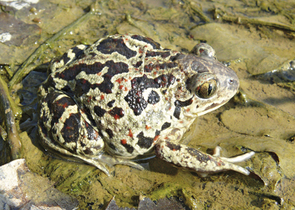The Journal is published by the Nature Conservation Agency of the Czech Republic in cooperation with the Cave Administration of the Czech Republic, the Krkonoše Mts. National Park Administration, the Bohemian Forest Mts. National Park Administration, the Podyjí National Park Administration and the The Bohemian Switzerland National Park Administration. It has been published since 1946.
cs / en
Nature Conservation 6/2012 — 15. 3. 2013 — Research, Surveys and Data Management — Print article in pdf
Jeřábková L.: National-wide Mapping of Amphibians and Reptiles in the Czech Republic – The First Out
– první výsledky

The best knowledge of amphibian and reptile distribution available is a basic prerequisite for their really effective protection.
Therefore, the Nature Conservation Agency of the Czech Republic has been organizing national-wide mapping of their distribution in the Czech Republic since 2008. In 2008–2011, 517 grids (76 % of the whole Czech Republic’s territory) were mapped for amphibian distribution and in total, approx. 51,000 data on their occurrence were gathered, while for reptiles, 458 grids (71 % of the country’s territory) were mapped, gathering 14,000 occurrence data. The outputs of the recent mapping show that our recent knowledge on the European Common Spadefoot (Pelobates fuscus) distribution has been heavily influenced by the lack of information. In some areas, its past occurrence was not confirmed. Moreover, the amphibian species has been newly found in many grids. On the other hand, the Natterjack Toad (Epidalea calamita) distribution has been recently confirmed only in 30 % of the grids, where the species occurs only at the individual sites: thus, the local populations are not connected to each other. After the first data assessment, similar more or less surprising findings have been reported from other species. The whole Czech Republic’s territory shall be fully mapped for distribution of both the vertebrate groups by late 2014. The data gathered on the species distribution are a background for amphibian and reptile protection in the field and can be used in conservation planning when seeking for the priority species, i.e. the most threatened species requiring the urgent measures for their survival to be taken as soon as possible.

